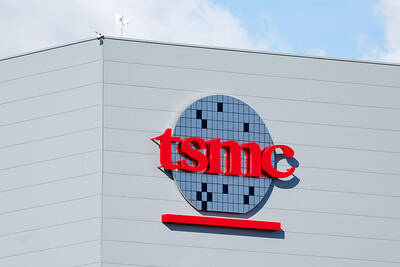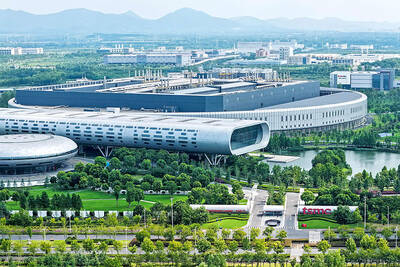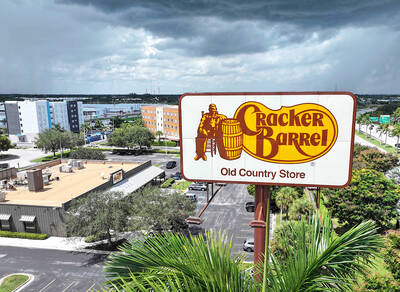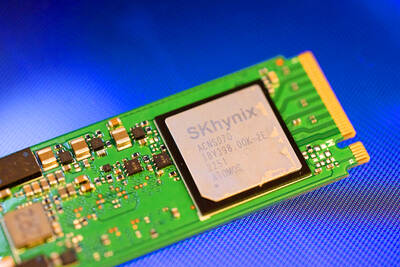The number of buildings in Taiwan receiving or being pre-approved for green building certification has risen almost 70 times in eight years, to 349 last year from five in 2000, the Council for Economic Planning and Development (CEPD) said yesterday.
Considerable progress had been made promoting sustainable buildings since the Ministry of the Interior launched its green building program in 2001, the CEPD said.
As of September this year, 2,295 buildings have been certified as “green buildings,” and they have reduced carbon dioxide emissions by 521,000 tonnes annually and saved users NT$2.16 billion (US$66.5 million) in electricity and water charges.
Taiwan became the fourth country in the world to implement a green building certification protocol when it introduced its unique EEWH (ecology, energy saving, waste reduction and health) system in 1999.
The system, specially tailored to account for Taiwan’s tropical and subtropical climate, considers nine indicators in the four categories to determine whether a building meets “green” criteria.
Taiwan was also the first country in which the government took the lead in promoting the initiative, renovating public buildings and requiring them to meet the criteria, while including special clauses in its building code on sustainability.
Last year, Taiwan launched a four-year program to promote ecological cities and green buildings. It is expected to spend NT$2 billion by 2011 on renovating metropolitan districts and traditional street areas, improving interior green design technology and establishing a market mechanism for green building materials, the CEPD said.
The four-year project is expected to reduce carbon dioxide emissions by an additional 270,000 tonnes every year and lower electricity and water fees by NT$890 million a year.
The CEPD also said the government would look to place controls on projects with large construction sites to improve the quality of living in cities.

Taiwan Semiconductor Manufacturing Co (TSMC, 台積電) secured a record 70.2 percent share of the global foundry business in the second quarter, up from 67.6 percent the previous quarter, and continued widening its lead over second-placed Samsung Electronics Co, TrendForce Corp (集邦科技) said on Monday. TSMC posted US$30.24 billion in sales in the April-to-June period, up 18.5 percent from the previous quarter, driven by major smartphone customers entering their ramp-up cycle and robust demand for artificial intelligence chips, laptops and PCs, which boosted wafer shipments and average selling prices, TrendForce said in a report. Samsung’s sales also grew in the second quarter, up

LIMITED IMPACT: Investor confidence was likely sustained by its relatively small exposure to the Chinese market, as only less advanced chips are made in Nanjing Taiwan Semiconductor Manufacturing Co (TSMC, 台積電) saw its stock price close steady yesterday in a sign that the loss of the validated end user (VEU) status for its Nanjing, China, fab should have a mild impact on the world’s biggest contract chipmaker financially and technologically. Media reports about the waiver loss sent TSMC down 1.29 percent during the early trading session yesterday, but the stock soon regained strength and ended at NT$1,160, unchanged from Tuesday. Investors’ confidence in TSMC was likely built on its relatively small exposure to the Chinese market, as Chinese customers contributed about 9 percent to TSMC’s revenue last

On Tuesday, US President Donald Trump weighed in on a pressing national issue: The rebranding of a restaurant chain. Last week, Cracker Barrel, a Tennessee company whose nationwide locations lean heavily on a cozy, old-timey aesthetic — “rocking chairs on the porch, a warm fire in the hearth, peg games on the table” — announced it was updating its logo. Uncle Herschel, the man who once appeared next to the letters with a barrel, was gone. It sparked ire on the right, with Donald Trump Jr leading a charge against the rebranding: “WTF is wrong with Cracker Barrel?!” Later, Trump Sr weighed

LOOPHOLES: The move is to end a break that was aiding foreign producers without any similar benefit for US manufacturers, the US Department of Commerce said US President Donald Trump’s administration would make it harder for Samsung Electronics Co and SK Hynix Inc to ship critical equipment to their chipmaking operations in China, dealing a potential blow to the companies’ production in the world’s largest semiconductor market. The US Department of Commerce in a notice published on Friday said that it was revoking waivers for Samsung and SK Hynix to use US technologies in their Chinese operations. The companies had been operating in China under regulations that allow them to import chipmaking equipment without applying for a new license each time. The move would revise what is known